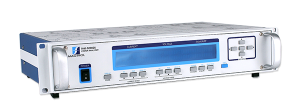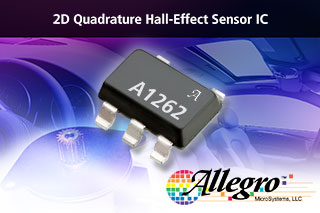 TDK Corporation has expanded its Micronas Dual-Die Hall-effect sensor portfolio with the HAR 379x sensors for multidimensional magnetic field measurements in safety-critical automotive applications according to ISO 26262 rules and in industrial applications. The new sensors come with a digital output. The sensors use Micronas proprietary 3D HAL technology for detecting angles in a range between 0 and 360 as well as linear movement or position. Samples became available in July. Start of production is planned for the first quarter of 2019.
TDK Corporation has expanded its Micronas Dual-Die Hall-effect sensor portfolio with the HAR 379x sensors for multidimensional magnetic field measurements in safety-critical automotive applications according to ISO 26262 rules and in industrial applications. The new sensors come with a digital output. The sensors use Micronas proprietary 3D HAL technology for detecting angles in a range between 0 and 360 as well as linear movement or position. Samples became available in July. Start of production is planned for the first quarter of 2019.
Versatile programming characteristics and high accuracy make them a solution for gear selector applications, especially because of the possibility to provide magnetic field amplitude in combination with the angle information. The device fits applications where linear movements have to be measured such as in dual-clutch transmission applications, for clutch pedal position detection, as engine stroke sensor, for transmission position measurement, or for cylinder and valve position sensing. Each sensor contains two dies operating fully independently. The two dies are placed upon each other in a way that they are still mechanically separated and electrically insulated from one another. Both sensitive elements are very close to each other. The advantage is that the two Hall elements measure almost the same magnetic field, therefore ensuring synchronous output signals.
Conventional planar Hall technology is only sensitive to the magnetic field orthogonal to the chip surface, the company said. Micronas enabled the integration of vertical Hall plates into the standard CMOS process. Thus, evaluating the relative strength out of the horizontal and vertical magnetic field components became feasible the key for excellent angular performance. HAR 379x are dual-die integrated circuits with full redundant signals. Each sensor includes a so-called pixel cell, consisting of two vertical (BX, BY) and one horizontal (BZ) Hall plate with spinning current offset compensation for detection of X, Y or Z magnetic field components at one point. Magnetic field lines in parallel to the sensor surface are detected by the vertical Hall elements, whereas the component perpendicular to the chip surface is captured by the horizontal Hall element.
For more information visit https://www.micronas.com/en



